Top 10 Cars Every Car Guy Needs to Know

So, you call yourself a car guy. Fair enough, you’ve browsed on over to AutoGuide so you must have at least a little petroleum in your veins. But are you a true automobile enthusiast? Do you know your accelerator pump from your synchronizer? Here are 10 vehicles every car guy needs to know about.
The GNX was Buick’s highest-performance model in the late 1980s. It was an $11,000 option on the already speedy (and pricey) Grand National.
The cars were powered by a turbocharged 3.8-liter V6 engine that could push them from a stop to 60 miles an hour in less than five seconds. The powerplants were assembled by McLaren while the cars were finished up by ASC.
From the factory the engines supposedly delivered around 300 horsepower running 15 pounds of boost, but they are widely believed to be underrated.
The cars stickered for about $30,000 back in 1987 so it’s understandable why only about 540 GNXs were built.
The next car on our list is the Acura NSX. Introduced in the 1991 model year, it was Honda’s attempt to compete with some of the most respected exotics in the world. The company didn’t merely want to build a better mousetrap; it was gunning to change the rodent-extermination game entirely.
The problem with sports cars at the time was they could be temperamental, maintenance intensive and challenging to drive. Ferraris and Porsches could also be uncomfortable in daily use. Honda was known for building high-quality vehicles and it was taking a no-nonsense approach in creating its crown jewel.
The NSX was the result of a development program that began in 1984. It was a mid-engined, two-seat thrill machine weighing a whisker more than 3,000 pounds. Honda kept the weight down by turning to the periodic table of elements. Rather than conventional steel, the car’s structure and chassis were made out of aluminum, a first for a production vehicle.
Initially it was powered by a 3.0-liter V6 delivering 270 horsepower. It featured dual overhead cams, titanium connecting rods and the company’s VTEC system that varied the timing and lift of the engine’s valves to make more power while maintaining driveability. Today, practically every new vehicle sold features some kind of variable valve timing.
Drivers could choose between a five-speed manual transmission or a four-speed automatic, but honestly, who would do that? Honda called the car “groundbreaking” and “visceral,” and it still is, even today.
Upping the fun factor, in 1997 an enlarged 3.2-liter engine was fitted. It boosted the horsepower count by 20 for a total of 290.
Honda discontinued the NSX in 2005 but is currently working on a replacement.
Moving on, the Mercedes-Benz 300SL is an automotive icon, and not just for its distinctive roof-hinged doors. The car was a winner on the track and a blast to drive on the street.
The production version was introduced in New York on February 6, 1954. It was based on a racecar that debuted two years earlier. The competition version saw great success in campaigns ranging from Italy’s Mille Miglia to the Bern Grand Prix. In its opening season it even took home gold and silver medals in a little competition called the 24 Hours of Le Mans.
At its launch, the automotive press was bowled over by its looks, driving dynamics and comfort. Germany’s Auto, Motor und Sport called the 300SL a “dream car,” while British journal AutoSport said its performance was “virtually unbelievable.”
Propelling this car into the history books was an inline six-cylinder engine. Pretty standard fare for the time, but with direct fuel injection it delivered a 215 hp wallop.
In its day the 300SL was one of the fastest cars on earth. Top speed was about 250 km/h, roughly 155 miles an hour.
The original production run lasted from 1954 until 1957. All told 1,400 examples were manufactured of which 30 featured lightweight aluminum bodies. Understandably, these command huge prices today. A prime example will set you back about three-quarters of a million dollars.
Scarcely has a more gorgeous car been produced. But don’t take my word for it. Enzo Ferrari himself, someone who knew a thing or two about automobiles called the Jaguar E-Type “the most beautiful car in the world.”
This legendary coupe was introduced in Geneva, Switzerland on March 15th 1961. The world’s motoring press was blown away by the car’s design and performance. Today, the E-Type is still the most recognizable symbol of Jaguar.
A “3.8-litre” straight six resided under its long, voluptuous hood, delivering a thrilling 265 horsepower. There were enough Clydesdales in the corral to hit 150 miles an hour. With a starting price of roughly £2,300, Jaguar’s E-Type was the affordable supercar of its day.
The world was a prettier place for nearly a decade and a half. The car remained in production for 14 years. All told the company sold more than 70,000 examples of this self-propelled sculpture.
An Audi without quattro is like a clock with no hands, a screwdriver without a handle or a sundae sans hot fudge. The two were made for each other.
For more than 30 years now the brand of four rings has been installing its unique all-wheel-drive system in a wide range of products, from sporty two-doors to full-size SUVs.
These three-plus decades of four-wheel fun began at the Geneva Motor Show in March of 1980. Audi introduced a squared-off coupe designed for both the road and rally races. The car is now referred to as the Ur-quattro. That curious two-letter prefix is truncated German and meaning “original,” as in “the original quattro.”
Developed under the watchful eye of Dr. Ferdinand Piëch, this legendary Audi packed 200 horsepower under its hood. Throwing common sense under the bus right along with Sir Isaac Newton, it was produced by a five-cylinder turbocharged engine displacing just 2.1-liters.
The company’s penchant for engines with an odd number of cylinders stands today, as does its love affair with all-wheel drive.
It’s been almost 30 years since the first BMW M5 hit the street. Now in its fifth generation, the car follows exactly the same formula it did back in 1985.
The magical elves at the company’s Motorsports subsidiary figured out a way to put howitzer-grade firepower under the hood of an everyday car. In the process they invented a brand-new vehicle segment, the high-performance sedan.
With five seats, four doors and one mission, the M5 was a highly focused automobile, but one that buyers could drive every day. That first-generation car, internally referred to as the E28, churned out 286 horsepower from a competition-grade inline-six that was borrowed from the BMW M1. From a standstill the sprint to 100 km/h took just 6.5 seconds, warp-drive for the era.
The M5 may have been the fastest sedan of its day but power is not the only part of the performance equation. A vehicle must have control, especially at Autobahn speeds. Fortunately the M5 was more locked down than a North Korean election. Burnishing its allure, it featured improved brakes, a beefed-up five-speed manual transmission and road-clenching suspension. Add it all up and the car stopped and turned every bit as well as it accelerated.
But the first-generation M5 also benefitted from a healthy dose of subtlety. With the exception of badging, the car was almost indistinguishable from a standard 5 Series sedan, making it a true sleeper.
Ford and Chevrolet are hated rivals but in the mid-1960s the Blue Oval had another enemy, one hailing from a different continent: Ferrari.
The story of the GT40 is one of triumph and heartache, or perhaps heartburn. To break into the European racing scene Henry Ford II tired to acquire Ferrari, but ultimately negotiations with Enzo fell through. In the process things had gotten personal.
Ford, the man, not the company, lusted after a Le Mans victory. To make this a reality he set out to build his own racecar capable of beating Ferrari in its own backyard. The Blue Oval developed and campaigned a revolutionary new vehicle in the form of the GT40.
The number in its name stands for a significant dimension of the vehicle. It has nothing to do with horsepower, acceleration or braking performance, rather how high it sits above the pavement. The original GTs were extremely low-slung, standing just 40 inches tall.
But what makes this car such a legend it what it achieved on the racetrack. With a little help from the late Carroll Shelby, and a rear-mounted 7.0-liter V8 engine, it accomplished the unthinkable.
In the summer of 1966 this American performance ambassador competed in the 24 Hours of Le Mans. Not only did Ford win the celebrated endurance race, it swept the podium with a 1-2-3 finish. The GT40 also carried the company to victory in ’67, ’68 and ’69.
As its name suggests, the Lamborghini Countach is an exotic supercar. The prototype of this road-going monster was unveiled at the Geneva Motor Show in 1971. It featured an over-the-top design with performance to match. The company took many orders for the car at the show that year.
The market version went into production in late 1973 as a ’74 model. It featured a broad, flat windshield with a single wiper, an aggressive front end and a chiseled, angular design. Wild looking scissor doors were part of the formula as well. With its distinctive design the car is best known for popularizing the futuristic look of contemporary supercars.
Early models were powered by a longitudinally mounted 4.0-liter V12. Later versions featured larger-displacement, and correspondingly more powerful engines.
The Ferrari F40 was designed to be a hardcore racecar for the road. It was a follow-up to the company’s 288 GTO.
To deliver maximum performance it featured all kinds of weight-saving innovations including carbon fiber, Kevlar and aluminum body parts. The windows and windshield were made of plastic to cut even more mass. All told the car weighed less than 2,500 pounds!
It was function over from inside as well; the result was a pretty compromised street car. There was no radio, carpeting or air conditioning, and the door panels were flat and shapeless.
Devastating performance was provided by a tiny 2.9-liter turbocharged V8 delivering around 470 horsepower. The Ferrari F40 was sold around the world from 1987 to 1992.
It’s the classic recipe for insane performance, cram a giant engine into a tiny car and hang on tight. That’s exactly what the late Carroll Shelby did back in 1965 when he cooked up the legendary 427 Cobra.
Perhaps by trial and error, Ford’s monster 7.0-liter V8 was eventually stuffed under the hood a tiny British sports car, the AC Ace. Earlier models used smaller engines including Dearborn’s 260 and 289 units. But with a thunderous 427 ahead of the firewall the resultant Anglo-American mutant was a superstar.
How do you judge the success of popular performance car? Well, one metric is the aftermarket. Reproduction Cobras are legion, original ones prohibitively expensive.

Born and raised in metro Detroit, Craig was steeped in mechanics from childhood. He feels as much at home with a wrench or welding gun in his hand as he does behind the wheel or in front of a camera. Putting his Bachelor's Degree in Journalism to good use, he's always pumping out videos, reviews, and features for AutoGuide.com. When the workday is over, he can be found out driving his fully restored 1936 Ford V8 sedan. Craig has covered the automotive industry full time for more than 10 years and is a member of the Automotive Press Association (APA) and Midwest Automotive Media Association (MAMA).
More by Craig Cole



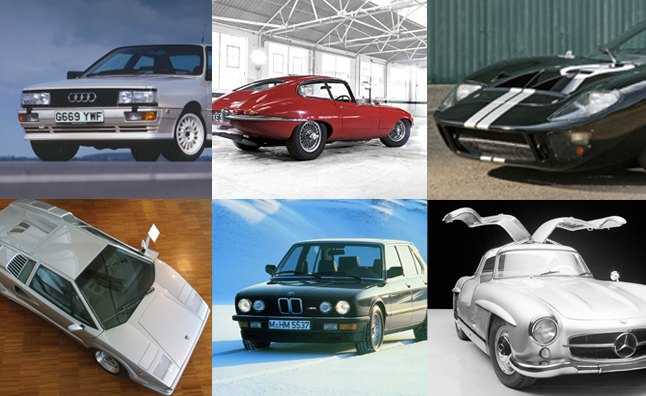























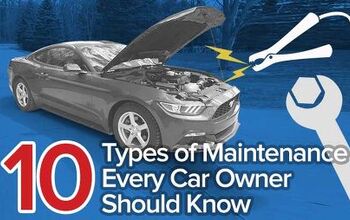
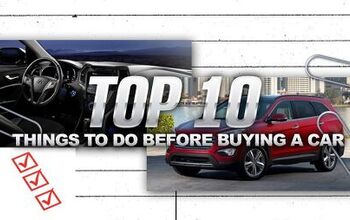

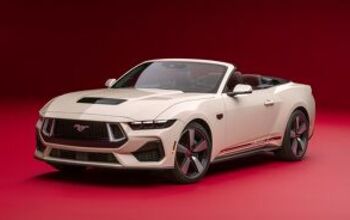
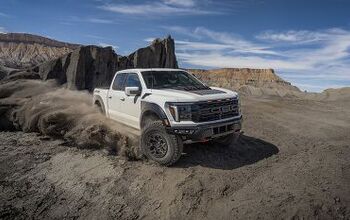







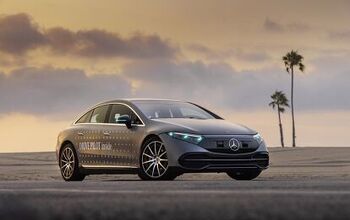
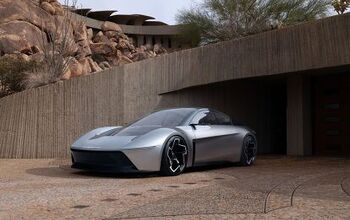

Comments
Join the conversation
I dont fully agree with this article, however, some people need to look beyond their personal favorites. Look at what each of these cars did for autos as we know it...
I havea 2012 m bedmnz BN180 amnd it has terrible noisy fron wheel brakes wjhemn reversing it sounds like thefront end is falling out